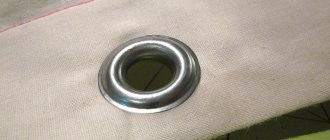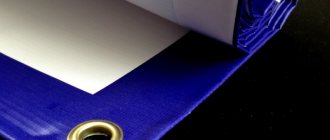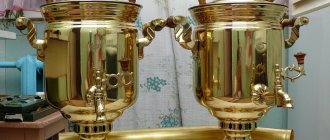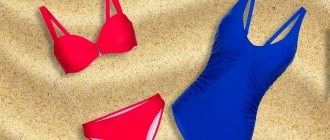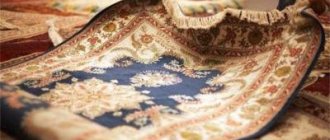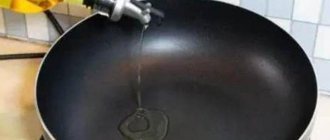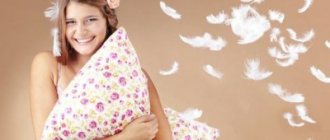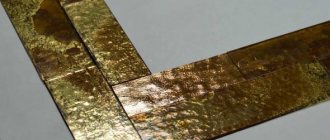You can install grommets at home with your own hands without using a special hand tool for installing grommets, that is, if you have another hand tool. To do this, you will definitely need a punch to install these elements, allowing you to make round holes.
Installation of eyelets at home is carried out with special tools.
Instead of a punch, they also use a round metal tube, which can be one elbow of an old, broken antenna, and a hammer with a comfortable handle. You will also need a metal ball, taken, for example, from a bearing or a children's magnetic construction set.
Punch for eyelets: description, scope of application
To install eyelets, round holes of a certain diameter are required, which are very difficult to make at home with improvised tools.
Experience from industries where accessories are used in the production of footwear, printing, textile products and leather goods came to the rescue. The main purpose of the grommet is to protect the edges of the hole from destruction.
Large companies use the grommet stapler as a tool for filing documents, and the rivets are often decorated with corporate symbols. Industrial enterprises use punches for grommets. Today, many companies offer for sale variants of punches for home use. This hole punch allows you to solve several problems at once: it perforates the material, bends its edges, so no additional processing of the edges is required.
Compatibility with instruments is checked individually each time.
There are the following types of punches for eyelets:
- manual;
- semi-automatic;
- automatic.
The choice of tool for installing grommets depends on what products you want to install.
Let's try to figure out which option you should choose.
It is important to understand the material, how strong the work will be, what the grommet itself will be made of, its shape and range of sizes. The choice of ring size will depend on the functional load of the product
Products come in different colors, shapes and materials.
The variability of the grommet itself will also affect the choice; you can use a metal version made of brass or steel, wood, plastic, coated or uncoated, of various shapes and sizes. Regardless of the type and shape, the fittings consist of two components: a bushing and a washer, so the principle of operation of the punch is approximately the same everywhere.
A hole is made with a punch, a sleeve and washer are applied and secured with a tool.
At the same time, the manual version of the hole punch is in great demand due to its low cost and ease of use in the original version. Usually it includes a punch, with the help of which the hole itself is made directly, a matrix into which the sleeve and washer are inserted, and embossing, by pressing which they are fixed components of the eyelet on the material.
Experts recommend purchasing devices in whole sets, but using universal, multifunctional ones is no less convenient.
Disadvantages of the manual option:
- for different grommet options you will need appropriate attachments for the embossing;
- with a high density of the material used, the process of piercing the material is labor-intensive;
- Not suitable for leather goods.
For “small things”, a hand tool with capabilities limited in terms of the size of the installed products is suitable.
Pros:
- availability;
- use at home.
In order for any eyelet installer to last as long as possible, it must be kept clean, visually inspected periodically, and lubricated with machine oil.
A semi-automatic hole punch is suitable for working with materials of increased strength, since the hole itself is punched automatically by the sharp edge of the sleeve itself
If we choose this option, then the choice of the eyelets themselves is especially important.
Hole punch eyelets must have a sharp edge.
Minuses:
Purchasing specialized eyelets.
Pros:
- versatility (suitable even for working with tarpaulins);
- availability;
- minimum effort;
- performance.
Installation pliers are not universal - the clamp for eyelets and blocks of different sizes is selected individually.
In industrial production, automatic punches are used.
Pros:
versatility in materials and eyelet sizes.
High performance.
- minuses:
- high price;
- weight and dimensions of the punch.
For large eyelets you will need more serious equipment.
Features of working with the product on a gazelle or truck
If you need to glue a damaged section of an awning on a cargo truck or gazelle, you will need to observe a number of nuances. Before carrying out work, the vehicle must be driven into a garage or other room where the optimum temperature is maintained and there is enough space to access the defect on the canvas.
For convenience, it is better to remove the awning from the car so that you can apply force when fixing the patch and do not have to reach for the damaged areas, but if the design of the vehicle does not allow for the removal of the canvas, then you will have to carry out the work in the existing conditions.
Special tool for installing eyelets
The most powerful and reliable unit for framing through holes in various materials, from plastic to silk, is a mechanical press, for example, TER-2. This heavy unit sits on a solid, non-wobbly surface and allows you to instantly secure grommets, whether they have a washer or a simple one. The walls are torn into separate petals and slightly twisted inward - you get a neat circle on the front and back sides. Spare parts are sold for the device, which allow you to work with blocks of different diameters. The main disadvantages of the device are its high cost and bulkiness.
Operating procedure:
- Place the grommet in the finished hole.
- Place on the bottom platform, face down.
- Place the washer on the protruding walls.
- Press the lever to engage the press.
Pliers are the most popular specialty tool for grommets. They are compact, relatively inexpensive (although there are samples for several thousand rubles) and do the job perfectly.
The best and popular tongs:
- Crop-A-Dile is a reliable, high-quality and stylish device made in America, the only drawback is the high cost, about 3 thousand rubles;
- Crop-A-Dile BigBite - large tabletop tongs, an intermediate option between a press and tongs, allows you to place blocks at a greater distance from the edge of the material, cost around 4 thousand rubles;
- Micron is a tool made in Taiwan (and of Russian origin) and in the middle price category. Both simple tongs-press and tongs-punch-press, revolving type are produced (change is made by rotating the circle with attachments clockwise until it clicks). A distinctive feature of the latter option is the rubber “lips” in which the grommet is fixed and which protects from scratches. Disadvantage: after some time, the convergence of the platforms becomes insufficiently accurate.
- “Zubr” is a Russian brand instrument that is produced in Taiwan. Belongs to the middle price category and the same quality segment. Reviews about the forceps are mixed, so it is difficult to recommend them for professional use.
- Punch is a Chinese company that produces, among other things, pliers for installing eyelets. Average price, but quality is far from perfect. Many users note the inconvenience of the tool.
What to look for in the store
When choosing pliers for blocks, you should be picky: evaluate the quality of the steel, the power of the design (the force should be on the levers, not on your hands), a big plus is the rubberized or plastic handles, the material of which does not smell. For revolving models, the drum should rotate with little effort, but without interference. As a counter-example, with some Chinese pliers you have to loosen and tighten the safety screw in order to turn the wheel from the hole punch to the press - this is extremely impractical.
Auto
The most productive and high-quality installation is the automatic installation of eyelets using a special mobile electric press. This device allows you to mount up to one and a half thousand rings per hour with the highest quality of work. An electric press allows you to perform the following actions that affect the quality of work:
- load grommet elements into separate containers in large batches, thereby ensuring their automatic feeding;
- Adjust the installation distance for different requirements;
- move the device along the edge of the awning fabric, installing it in the desired place. To control the direction of movement and the distance to the edge, many electric presses are equipped with a laser beam and an adjustable stop.
Using an electric press for eyelets has many advantages, the main ones being high quality and speed of installation. The high cost of this type of equipment makes it practically inaccessible for small companies.
Installation instructions yourself
Having all the necessary materials and tools at hand, anyone can independently make an awning or canopy with eyelets at home, which can be used on the farm. This product can be used in various areas, from a tarpaulin curtain at the entrance to a garage to covering an outdoor pool from foreign objects and dirt.
Eyelets are great for securing canvas curtains to gates
Regardless of the area where you plan to use an awning with grommets, first of all, you should acquire high-quality blocks and rings; the overall strength of the grommets will depend on them. Experts recommend purchasing ready-made kits in specialized stores.
Typical eyelet sizes
As for tarpaulin, its choice should be made based on its intended purpose, based on the characteristics of strength, moisture resistance, frost resistance and the like. The shape and size are selected individually.
Preparing the tarpaulin for installation of eyelets
Having prepared all the necessary components and selected a tarpaulin for installing eyelets, you can move on to the next stage - punching holes in the tarpaulin, for which you will need the following tools:
- Ruler.
- Pencil, marker.
- Punch.
- Hammer.
Using a pencil and ruler, you need to find and mark the areas on the tarp where the eyelets will be placed. The mark should be made according to the diameter of the ring, evenly, at the same distance from each other. After this, using a punch and a hammer, holes are made in the tarpaulin in accordance with the marks.
It is necessary to accurately determine the location of the eyelets so as not to make unnecessary holes
If the tarp is thin, you can use a piece of durable fabric or use plastic or brass washers
Before punching holes, a wooden board is placed under the tarp to serve as a shock absorber when the hammer and punch collide.
Installing eyelets on the awning yourself
Having completed all of the above manipulations, all that remains is to secure the grommet in the tarpaulin awning, which, if all conditions are met, will not be difficult.
To do this you will need the following tools:
- Flaring.
- Hammer.
A block and a ring are placed in the previously prepared holes on the tarpaulin on both sides, opposite to each other, after which they are securely fixed to the material using a flaring tool and a hammer.
A furniture bolt with a wide head is suitable as a flaring tool.
This method allows you to quickly and efficiently install eyelets on the awning for further use for their intended purpose.
As you can see in the photo, flaring can be done quite efficiently even without a special tool
In addition, there are special manual presses for installing eyelets, which allow you to install eyelets on any type of material as quickly and easily as possible. This method is more suitable for installing grommets for commercial purposes.
Where are they used?
There are several areas of activity in which eyelets are often used.
Outerwear production
Most often, such elements are used to create outerwear. In clothing production, such eyelets are used to decorate products and give them a unique look. Such details can often be seen on modern models:
- raincoats;
- sheepskin coat;
- windbreaker;
- jackets;
- winter coats
Shoe making
Many manufacturers use eyelets when creating shoes. In this case, only high-quality and durable components made of durable steel metal are used. Their surface is coated with nickel or copper. This protective coating protects the metal from the formation and spread of corrosion.
Release of home furnishings products
Often lumpen people can be seen on home furnishing products, which are found in almost every home. These elements are found on some types of curtains or curtains. They are also added when making lambrequins or curtains. In this case, simple steel parts are used that do not have a protective coating.
Tourist and holiday destinations
Such components are often used to create country or tourism products. For example, they are used during the production of textile canopies. Grommets are also found in most modern tents used in the tourism industry. In the manufacture of canopies and tents, high-strength steel parts are used.
In commercial activities
Eyelets are considered common parts that are used in commercial activities. Many manufacturers make them and then sell them separately. Most often they are purchased to be used to replace broken elements.
Manufacturing of shipping products
Few people know, but eyelets are often used in the creation of shipping products. Most often, such rings are used to create sails for ships. In this case, large and large parts are used that would withstand the load from strong gusts of wind.
In office and printing
Another area of activity in which eyelets are regularly used is printing and office work. Metal products are used to create calendars, notebooks, and books. They are sometimes found in decorative gift wrappers.
Installing eyelets: features
Installing eyelets on curtains.
Such an element is attached to curtains without much difficulty. The following tools and materials will be useful for their successful installation:
- the eyelets themselves;
- hole punch, which can be easily replaced with scissors for thin fabric;
- small ruler;
- pencil;
- product.
A piece of special tape is attached to the top of the curtain. Then you need to pick up the edge of the curtain and iron it
It is important not to overheat the iron in order to maintain the original appearance of the product. The folded edge can be ironed well.
Place the eyelets in the desired position and use a pencil to draw a circle using the inner base
The marked area must be cut out, making a 5 mm indent from the edge.
Place the existing washer-lining on the curtain and join it to the circle cut out earlier. There should be some fabric left over. It is important to ensure that there are no gaps left. The final step is to apply the decorative element and squeeze it all the way, you should hear a click.
Calculating the required distance
To install the eyelets correctly, it is important to accurately calculate the required distance between them. Need to do some calculations regarding the width
6 cm are subtracted from its numerical indicators; they will be used to finish the sections in the side part. Subtract 5 cm from the resulting number, then divide by the number of loops and subtract one. The resulting number will determine the distance between adjacent eyelets. So, it often happens that small elements have a border of 10-12 cm, large ones - 15-20 cm.
Characteristics
When choosing new eyelets, pay attention to several important characteristics
Diameter
The main distinguishing characteristic of such parts is the diameter of their holes. Determining the optimal diameter directly depends on the purpose for which the part is purchased. In stores you can find designs with a diameter from three to forty millimeters.
Depth
Another important parameter is depth. To determine it, you need to measure the distance between the end of the sleeve and the top cap. Before choosing a part, it is necessary to determine its depth, since this indicator determines the thickness of the installed structure.
Material
It is known that eyelets are made of various materials and therefore this must be taken into account when choosing them. If they will be installed outdoors, it is better to use structures made of plastic or metal coated with copper. Any materials are suitable for residential premises.
Form
Some people believe that such hats can only have a round shape, but this is not so. There are manufacturers who produce fittings in rectangular, oval or square shapes. There are also unique uniform models made in the form of dolphins or fur seals.
Technology for making curtains with eyelets ↑
Curtains with rings are valued for their beautiful, uniform waves of drapery, to obtain which you need a lot of fabric - usually 2.5-3 widths are taken, you should not save and take less than 2.5, this will noticeably affect the appearance.
To decorate such large windows you will need a large amount of fabric.
A span of more than 4 may also not give the expected decorative result, because they can turn out to be bulky and heavy, more like shields. The choice of length is individual - in the kitchen the length varies more freely - from the floor to the windowsill or to the middle of the window.
We must not forget that the edges of the fabric will have to be folded and stitched, add another 3-4 cm on the sides and bottom and a little more on top - it will not be possible to install the rings well on one layer of fabric. To calculate the amount for the top hem, you need to take into account the density of the material - the denser it is, the more you can fold (professionals recommend leaving 13 cm on thick fabric). It is imperative to take into account the diameter, because it is directly connected to the cornice; for unhindered movement of the curtains it must be 1.5 cm larger. Otherwise, the eyelets will cling to the cornice and get stuck on it.
In order to sew, you need: fabric, eyelets, scissors, a pencil, eyelet tape (it can be replaced by interlining or dublerin), an iron for gluing it and skills in working with a sewing machine (entry level is quite enough).
Determine the distance between them in advance, based on the desired depth of the folds - if you need deep relief folds, then install the rings at a distance of 22 cm from each other, if the folds need to be softer, then 15 cm is enough. Large intervals between the rings can lead to sagging fabrics, especially dense ones, and small ones will not give the expected aesthetic effect. The optimal distance is 18 cm.
The deep relief wave allows you to take a fresh look at their design
It is important to determine the distance from the top edge; here it is better to focus on the density of the material. Soft fabric holds its shape worse; the bend at the top edge is about 5-6 cm for organza or tulle, if the fastening rings installed on them have an outer diameter of 3.5-4 cm
You can install eyelets on loose fabrics, but place them closer to the top edge
Feel free to cast aside all doubts - organza, mesh, voile, tulle can adequately compete with other types of fabrics for curtains and will harmoniously fit into the interior of the room.
On such fabric, the main condition is the location closer to the upper edge of the product.
If the combination of lightweight fabrics and fastening rings does not inspire confidence, you can make an original trim from a denser fabric, and at the same time show off your design abilities.
Such a bright trim will emphasize the elegance and sophistication of organza
Before installing them, you need to make sure that the curtain is completely ready - the edges are processed and the top of the product is reinforced with grommet tape or its equivalent. Now you can begin the most important part of the work - marking the fabric. Marks are made where the rings will be installed, and holes are carefully cut out.
When marking fabric, you need to take into account the possibility of its displacement.
Eyelets are installed on both sides and snapped into place, or pressed through with a press, if ordinary.
After the markings have been made and the holes cut, you can safely install the mounting rings themselves.
If professional manufacturing is not part of your immediate plans, then you will not need a special tool for installation. But a punch and flaring tool will greatly facilitate and speed up installation.
Materials used
Before purchasing eyelets, you need to familiarize yourself with what materials they are made from.
Steel
Some people think that steel products are the most expensive, but this is not the case. In their manufacture, a material is used whose surface does not have a protective coating. Such parts are considered cheap and unreliable, since over time traces of corrosion appear on their surface. In damp conditions they will deteriorate within five years.
Aluminum
Aluminum parts are considered the most common option for framing openings when making awnings, awnings or other products made from tarpaulins. The main advantage of aluminum is that it never corrodes. This allows it to be used in damp rooms and outdoors.
Brass
Brass products are considered quite expensive and therefore are not used as often as others. This durable metal is known for its durability and reliable rust protection. Eyelets made of brass will last for several decades if used correctly. Then they will have to be replaced with new ones.
Copper
Experts advise using steel eyelets that are coated with copper. They differ from other products in their yellowish coating with a slight orange tint. They will last more than ten years.
Silver
Expensive products are often made of silver. This metal has many advantages and is therefore popular. The main advantage of silver is its resistance to high levels of humidity. The silver coating is also protected from acids.
Gold
Such products are not made entirely of gold, they are gold-plated. Most often, gold-plated eyelets are used in the production of goods for home decoration or expensive curtains.
Tree
Wooden eyelets are considered a decorative element that can be used to decorate rooms. They are often used when hanging curtains or curtains.
Plastic
Products made from plastic are considered the cheapest. Such structures break quickly and are considered to be less resistant to mechanical damage. The advantages of plastic include the fact that it does not deteriorate in high humidity.
How to install grommets without tools
It is quite possible to rivet the grommet so that it closes the hole without special units; in some cases the result will be better, especially when compared with cheap, low-quality pliers.
Ways to install eyelets using improvised means:
- A bolt with a round head slightly larger in diameter than the grommet. Instead, a bearing, steel ball, etc. are also used. The striker is placed on the walls of the grommet and hit once or twice with a cloth, then the “petals” are bent with the same hammer, striking from the center to the edge of the grommet.
- Phillips screwdriver (or screwdriver bit). The sting is placed in the center of the grommet, on the wrong side, and the handle is lightly struck with a hammer, as if it were a hand punch. It turns out to be a quadrangle - the part is rotated 90 degrees and the blow is repeated. The walls move apart and are tapped with a hammer to make the edging flatter.
- A blade from a stationery knife. It is placed across the block and hit from above with a hammer so as to cut the walls almost to the fabric (or other material). Rotate 90 degrees and repeat the operation. You will need 3-4 such cuts. Then the “petals” are bent and flattened with a hammer.
Types of grommet rings
The materials from which this type of fastening is made are varied - from metal to plastic of various shapes and colors.
Installation methods also directly depend on this. A plastic eyelet is much easier to install, but a large load on it is unacceptable! If desired, you can remove it and use it again, but the fixation of the edges of the fabric will be very poor - they crumble and become deformed, and the product looks sloppy.
Colored metal eyelets are much more reliable than plastic ones - they hold the fabric perfectly, preventing it from tearing.
Steel fasteners are considered the most reliable for fastening fabrics, leather parts, and cardboard. But before you install eyelets without tools on clothes or shoes, you will need to practice on unnecessary pieces of material. This is necessary to understand how the work is going and not to spoil the thing.
The most popular way to use eyelets is to attach them to curtains. To do this, you additionally need grommet tape, which is sold in specialized stores. It is used to glue the edge of the fabric, creating rigidity.
The mount itself can have a completely different shape - from circles to animals. The color palette is also huge.
Curtain eyelets will help to form smooth, interesting and neat folds. In order to move such a curtain on the eaves, you do not need to apply any force. The fabric does not wear out on the cornice, and, accordingly, its service life is longer.
Additional tips and tricks
To properly repair an awning, you need not only to follow the standard provisions of the instructions, but also to familiarize yourself with the list of additional recommendations. Among them are the following:
- As a patch, it is better to take fabric from the same material as the canvas itself. The patch should be strong with no frayed edges.
- Do not use tape on the damaged area, since this is an unreliable way to solve the problem. Only certain types of adhesive solutions are able to fix the patch.
- If you doubt your own capabilities, you can always contact a workshop where the integrity of the canvas will be restored. In addition, specialized services can repair even very large defects.
- If the fabric has come apart along the seam, then after sewing with nylon thread it is recommended to apply an additional layer of adhesive solution.
- When performing work, be sure to follow the instructions for using the adhesive composition and the basic rules for gluing the patch to the canvas. In particular, repairs cannot be carried out without first degreasing the surface, since without this the adhesion of the materials will deteriorate.
By following simple tips and recommendations, you will be able to carry out high-quality repair work and restore the condition of the canvas. If the wear is so severe that the awning tears repeatedly with minimal external influence, it is easier to replace the material.
Store-bought or homemade?
A wide variety of models of roller, Roman, pleated and other compactly assembled curtains on sale does not necessarily guarantee that among the entire offered range there will be a perfectly suitable product. The main characteristics of industrially produced options are:
- standardized sizes. The typical size range - length, width - is designed for the popular dimensions of metal-plastic and wooden windows;
- neutral colors. For the most part, ready-made curtains have calm, soft colors that are suitable for different interiors. Colored and printed products are more expensive;
- using non-woven or woven synthetic materials as a base fabric. Their advantages are resistance to ultraviolet radiation, ease of cleaning, durability, and strength. The main disadvantage is the synthetic nature;
- standard opening/closing mechanisms;
- standard finish or lack thereof.
For many users, all of the above features are advantages. But if you have a non-standard window size, a desire to create an individual design, or a desire for natural materials, it is better to try to order a suitable model or create roller blinds for plastic windows with your own hands.
Press: homemade for metal work and household needs - options, drawings, manufacturing
Production is unthinkable without pressing operations, and modern production even more so: the processing of metals and materials in general by cutting produces waste, which ultimately has a significant impact on the environment and economy. In a home workshop, in a garage, it is also difficult for an individual entrepreneur working in metal to do without stamping, forging, straightening, bending, molding (flattening), pressing and pressing out blanks and parts, but the choice of presses for individual use is not wide, but the prices are scary. A press is no less necessary just on the farm - for squeezing juice, oil, baling hay. Virgin juice/oil can only be obtained from a special press (see below); You need to press the grapes into the wine especially carefully and with skill. And with the choice of ready-made presses and their prices, the situation is similar to the previous one. Finally, rising energy prices are forcing many homeowners to think about switching their autonomous heating to waste (alternative) fuel, or at least how to make fuel pellets or briquettes from existing household waste (straw, husks, husks, sawdust, shavings); This also requires a special press. This publication is devoted to how to make a press with your own hands for these and some other purposes (also see below).
Homemade presses for various purposes
Curtains for the hall
The design adds coziness to the room. Made in a single image create a feeling of unity.
Decorations for the hall are designed to bring beauty and aesthetics into the house.
Look great with different interior styles.
Styles:
- minimalism;
- modern;
- Scandinavian;
- Provence;
- high tech;
- madder;
- loft;
- modern
It is important to choose the right patterns, tones, combine, match colors with objects in the room in order to put emphasis on something. Provence supports warm, pastel colors
Multi-layering of products is appropriate in country and modern.
A minimalist style is perfect for the living room. Refinement and sophistication are its basis.
The right combination of decorations in the style of the room is the right choice for decorating your home. By combining the colors of the product and the rings you can completely transform it.
DIY sewing
Ready-made models are sold, but you can sew them yourself. Sewing will not take much time and will not be a huge task.
Step-by-step instruction
When purchasing rings, you need to focus on the color of the fabric. If you select decorative elements, for example, tiebacks, then you need to focus on them. In special kits to complete the installation on the cornice, there are not only eyelets, but also clips, tiebacks, and pins.
You need to choose natural materials, high quality and durable.
Installation will not be difficult. You can also string them onto your own curtains. Count a certain number of rings. Compare with the width of the material. The number is divided by the length of the canvas. The distance is from 15 to 25 cm.
Important! Sealing tape must be used when installing elements. Fabrics for sewing:
Fabrics for sewing:
- thick curtains;
- elegant;
- tulle;
- velvet, velor, wool.
Thick curtain fabric is most often selected for the living room or bedroom. Velvet and velor are combined with the style of the room. Light linen fabrics are more suitable for the kitchen. They do not absorb odors and do not fade in the sun.
When choosing fabric, you don’t need to skimp on the material. Take this into account for the top allowance when hemming. Leave a margin at the bottom, as it should not hang down to the floor.
Important! Good tools make for a quality installation
The style, color, density or lightness of the fabric is selected at your discretion
But it is important that they fit harmoniously into the design of the room
Tools for work
- Hole puncher for creating holes.
- Small tailor's scissors.
- Forceps.
- Chalk or just soap.
- Centimeter.
- Iron or press.
- Sewing machine.
- Grommet tape.
Installation:
- It is necessary to process the side sections of the product.
- Marking is carried out along the width of the canvas. Keep in mind that you need to leave 2 cm from the edge and a little more for the seam allowance.
- The tape is ironed on the reverse side. Use gauze; delicate items require careful handling.
- Folding the seam allowance, sew on a sewing machine.
- Punching a hole in the fabric is done with scissors or punches.
- The excess material is cut out. Using the previously made marks, a crosswise cut is made.
- The diameter of the element should correspond to the cut made in the fabric.
- Eyelets are inserted. There is one piece on the wrong side, and a second piece on top. Excess threads are removed with scissors and protruding material is tucked in. The eyelets are pressed on both sides, and so on every detail.
The methods of attaching to the cornice are not limited to this. They hang it on a bar, use special clamps, and string it on a cornice or rope.
Eyelets combine practicality, ease of use, reliable design, and ensure the durability of the product. Suitable for all rooms, they are wear-resistant. Feel free to choose and combine curtains. Installation does not take much time. At the same time, the resulting design will delight you for many years.
Sometimes even changing one detail can change a room beyond recognition, and beautiful eyelet curtains may well be that.
Stationary
An analogue of a mobile one is a stationary electric press. It is equipped with tools for punching holes and making a grommet mandrel on it. A special feature of this machine is the absence of a mechanism for drawing the awning fabric, which significantly reduces the speed of its operation.
Our company Mostent has been working for a long time in the market for the production of ready-made awnings, used not only in transport, but also in the installation of various lightweight building structures on steel frames. The company's production lines are equipped with the highest quality equipment for installing eyelets - automatic mobile presses, which allows achieving the highest quality of work.
The high speed of installation has made it possible to significantly reduce the time required to complete even the most voluminous orders, which sets us apart from our competitors. At the same time, the advantages described above did not affect the increase in the cost of work, which is very convenient for our regular and potential partners.
How to sew curtains
This type of window design is considered the most popular today. In addition to the previously listed basic materials for sewing curtains, you will need grommet tape, the adhesive base of which will help to properly attach the product. The tape can be purchased at a specialty store, where it is offered in widths from 5 to 12 cm.
In order for the curtains to have an aesthetic appearance, you need to correctly calculate the number of fastening elements. How to make eyelets on curtains? If an even number of eyelets is installed on the curtain, the edges of the product will be directed in one direction. The standard distance between them can range from 15 to 20 cm. If the distance is greater, then the folds will be larger.
The first and last fastening element is installed 5–7 cm from the edge. If the distance is greater, the curtains will puff up; and if it is less, then the part may get caught on the hem and not be fixed.
Once all the instructions have been carefully read, you can begin sewing. DIY curtains with eyelets step by step instructions.
Master Class.
- The top edge of the curtain is folded inside out 2 cm and ironed.
- The size of the next hem will depend on the width of the eyelet tape. It is wrapped and ironed.
- The eyelet tape is placed between the fabric, under the large hem. It should be shorter than the width of the curtain by the amount of the side hems.
- Having straightened everything out carefully, we proceed to ironing. To avoid damaging the fabric of the curtains with the hot temperature of the iron, you need to place the cotton fabric on top of the curtains and only then iron them.
- To prevent the tape from falling off over time, it must be sewn with a machine stitch along the upper edge of the hem.
- The next step is processing the bottom of the product and the side edge.
- We install the eyelets according to the markings made in advance. To do this, you need to attach a ring and draw its inner circumference on the fabric. When all the elements are outlined, you can cut out the holes with sharp scissors, you will get some kind of loops. In order for the eyelets to be neatly attached to the fabric, you need to cut a slightly larger diameter than the one drawn. Two parts of the eyelet are applied to the resulting hole and compressed until a characteristic click is heard.
Advantages of curtains:
- Many people enjoy the sound of their window curtains sliding and closing. But this only happens when metal is used as the material for making eyelets.
- When the curtains are closed, the wave is uniform - it will not be disturbed after washing.
- Thanks to the eyelets, the fabric wears out more slowly, regardless of how often the curtain is closed.
- The design is very simple: even a child can open and close the curtains.
- If you accidentally pull the curtain, it will not break. The mount is quite strong, the main thing is to install it correctly.
Distinctive features
Thanks to them, the curtain can be closed quickly and easily. They are located so freely that they do not impede the movement of the canvas. They move smoothly and calmly along the cornice. They don’t sag, stay straight, and don’t form wrinkles. When moving, they do not affect it, ensuring wear resistance of any model.
A distinctive feature is that it can be attached to curtains. They look installed on special equipment. In fact, even a non-professional can secure them. The time and effort spent will not keep you waiting long. Carefully hung curtains compensate for the work.
In places where there are slits, beautiful natural folds are created along the entire length of the curtains, which allows you to create romantic comfort.
Preliminary work
Preliminary preparation is important in any business to obtain a quality result. Before you think about how to make eyelets for curtains, you should:
- Make the necessary calculations.
- Buy material of the desired color for curtains and lining.
- Buy dublerin or grommet tape, eyelets. The width of the tape should be 2 centimeters larger than the outer diameter of the fastener.
- Find a flat surface to work on: you can work on the floor or use an ironing board.
Fabric yardage calculation
To calculate the required amount of fabric, you should find out the length of the cornice and determine the height of the finished product. The length of the cornice should be multiplied by a factor to give the product beautiful folds. The coefficient will be equal to:
- For light fabrics - 1.5.
- For dense materials - 2 or 2.5.
The calculation also includes material for side allowances (up to 15 cm), top and bottom allowances (at least 25 cm). The calculation looks something like this for a cornice length of 1.5 meters: 1.5 2 + 0.15 = 3.15 meters or 315 centimeters.
Counting the number of fasteners
To purchase the required number of fasteners, a preliminary calculation of materials should be carried out. To calculate the required number of eyelets, you need to measure the internal and external diameters of the fasteners, taking into account the standard properties:
- It is necessary to purchase an even number of eyelets.
- The rings should be attached at a distance of about 18 centimeters. The optimal distance for attaching them ranges from 15 to 20 centimeters. When using a double curtain rod, consider the distance between the rods so that the curtains do not touch.
- The distance between the side edge and the center of the first eyelet should be at least 7 centimeters. This parameter depends on the width of the hem and the outer diameter of the fastening. To securely fasten the fittings, you should place them so that the fasteners do not touch the seam.
Preparing fabric for cutting and finishing seams
The curtain is prepared in advance for installation of eyelets. Before installing the rings, you should:
- Decorate curtain fabric. This procedure is carried out by wetting, drying until damp, and ironing the fabric. After this treatment, the fabric does not shrink after washing.
- Sew on the lining and finish the seams.
The seams are processed in strict sequence. The top seam is treated first. The material is processed in compliance with the technology:
- The material is laid out on a flat surface.
- The wrong side is folded and ironed 2 cm.
- Another fold is made to fit the width of the grommet tape.
- Having released the width of the hem from the edges, lay the tape between the layers of fabric.
- The strip with tape is glued using an iron. Iron small sections of the tape until the sides are completely glued. Only after obtaining a high-quality result do they move on to the next section.
- The fabric is sewn along the edge of the lapel, departing 2 centimeters from the edge.
You can sew the side seams using a hem stitch. It is not necessary to use grommet tape - you can use regular curtain tape, after removing the tension cords from it. You can hem the bottom of the product after installing the eyelets at home in order to measure the desired length of the curtain to the floor. In order not to spoil the fabric due to lack of experience, you can carry out all the necessary work on a small piece of fabric.
Which one should I do?
Pressure pressing allows you to perform almost all pressing operations necessary in everyday life. Homemade presses are most often made energy-autonomous, i.e. without a separate drive, working fluid reservoirs, pumping stations, etc. The choice of one or another design of the press is ultimately determined by its purpose and working force.
It is easiest to use a car jack as a power unit built into the press - it develops a force of up to 100 tf, and jacks for 10 tf are commonly used. The only operation that a jack press cannot handle is molding (flattening) the ends of rods during artistic cold forging.
The most commonly used jack is a hydraulic bottle jack (but see also below). In this case, a hydraulic press can be made according to one of the traces. frame design diagrams (see figure):
Basic design diagrams of homemade presses
- Pos. A – the jack is turned upside down, tightly fixed to the fixed upper cross-beam, and a punch is attached to the head of the working rod of the jack. This is the simplest and at the same time reliable and vibration-resistant design (see below for the role of vibrations in the operation of the press). Disadvantages - if the jack is needed for its intended purpose, dismantling it is quite difficult and time consuming, and swinging the lever of a jack hanging upside down is not very handy.
- Pos. B – diagram with a movable table. Structurally more difficult, because a movable traverse is added - a table. They pump the jack as always, it’s easy to remove it, because... it may not be secured at all. Disadvantages – worst vibration resistance; in addition, the technology of most pressing operations is designed for the punch to press on the workpiece or part from above, but if it’s the other way around, it’s difficult and may not work out at all. But for repair and/or mechanical assembly work, this is the best option: if you need to squeeze out a tightly rusted shaft from a pulley or bearing or, conversely, press them onto the shaft, then its (the shaft’s) length is limited only by the height of the ceiling in the workshop. In general, a hydraulic press with a moving table made from a jack is the best option for a garage or service station.
- Pos. B – with a power unit on a movable cross-beam. Structurally the most complex, but vibration-resistant, strong and durable, because the load on the weakest link - the movable traverse - is not point-based, but actually dispersed. The jack may also not be secured, but if it turns out and crashes, the consequences will be worse than if it falls off the base plate. The disadvantage is that pumping a jack that slowly creeps down is not very convenient.
Note: the base plate is a heavy, bulky, material-intensive thing. Placing a press on a slab in a workshop or garage is not always possible. Therefore, the frame of homemade presses is most often placed not on a slab, but on a lower fixed cross-beam, structurally similar to the upper one (see below). This reduces the vibration resistance of the press by approx. twice, but for amateur conditions this is acceptable.
A manually driven screw press (pos. D) allows you to create a force of up to a maximum of 1.5-2.5 tf. In working with metal it is used when this is sufficient, in the following. cases (see also video):
When pressing force less than the specified values is sufficient:
Video: manual screw press for the workshop
How to sew curtains and tulle on eyelets yourself - step-by-step instructions
Sewing curtains yourself using eyelets will take some time. However, unlike products purchased or ordered from an atelier, making them yourself will cost much less. Costs will be associated only with the acquisition of the necessary material.
Fabric calculation
Having determined the total amount of material, calculations are made taking into account hems, where the allowance is:
- lower edge – 8–10 cm;
- the upper part can be up to 25 cm. Such a margin is required, since the eyelets must be attached to several layers of fabric;
- lateral edges – 3–4 cm.
In the case of sewing a curtain consisting of two parts, in order to fit the pattern, the material is taken with a reserve.
Tools and materials
To attach grommets to curtains you will need:
- grommet tape;
- scissors;
- ruler;
- pins for marks;
- chalk with a pointed end;
- pliers.
To install metal rings, you also need a hammer drill, a hammer, and a rubber gasket. The latter is necessary to soften the blows of the hammer on the fittings during fastening.
Initial material processing
Before securing the rings, the fabric is pre-compacted. After all, even dense material is not able to withstand the loads from the fittings installed on it for a long time. This applies to both plastic and metal products.
Therefore, to reduce the load on the curtain, a grommet tape is pre-attached. However, if it is not possible to use such a tape, then dublerin can be an alternative sealant. Although this material is inferior in its characteristics, it is still quite suitable as a reinforcing element. In any case, the tape is selected so that its width is greater than the outer diameter of the rings.
The upper part of the fabric is folded twice to the width of the installed tape, and the fold is ironed. In turn, on the sides, the seal is cut off with a margin equal to the width of the hem. After the manipulations, the canvas unfolds, and the tape is adjusted along the intended upper fold and secured with an iron. To ensure that no traces of a hot electrical appliance remain on the canvas, the work is carried out through a sheet of paper. To more securely fasten the eyelet tape, a seam is made along the very edge of the hem.
Markings for eyelets
After the grommet tape is secured, dots are applied to the curtains indicating the centers of the fittings. The marked places are marked with pins. Then the contours of the holes along the inner diameter of the eyelets are marked on the fabric, and the intended part is cut out along them with a margin of 2 mm. After that, rings are installed on both sides and snapped or pressed with a press.
Tip: To speed up and make work easier, use a flaring tool and a punch.
At this stage, the main task is to apply the central points evenly. To ensure that the edges of the curtain are in the same position, there should be an odd number of spaces between the eyelets.
